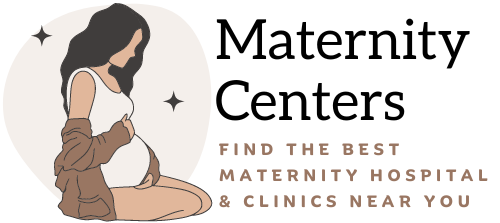Currently Empty: $0.00
How to Avoid Back Pain During Pregnancy: Effective Tips for Comfort and Relief

Back pain during pregnancy is one of the most common discomforts faced by expectant mothers. As the baby grows, changes in posture, hormonal shifts, and added weight on the spine can make back pain an everyday struggle. It not only affects physical comfort but can also impact sleep quality, energy levels, and overall mood during pregnancy.The good news is that with the right care, lifestyle adjustments, and prenatal practices, pregnant women can effectively reduce or even avoid back pain. By understanding the causes and taking proactive steps, expectant mothers can enjoy greater mobility, better posture, and improved overall well-being throughout their pregnancy journey.
This guide explains the causes of pregnancy-related back pain, preventive measures, and safe remedies so you can enjoy a healthier, more comfortable pregnancy. Whether you are in your first trimester or nearing your due date, these tips will help you manage discomfort and prepare your body for a smoother childbirth experience.
Contents
- Why Does Back Pain Happen During Pregnancy?
- Tips to Prevent and Manage Back Pain During Pregnancy
- 1. Maintain Good Posture
- 2. Choose the Right Sleeping Position
- 3. Exercise Regularly
- 4. Lift Objects Safely
- 5. Wear Supportive Footwear
- 6. Consider Pregnancy Monitoring Devices
- 7. Practice Prenatal Yoga & Stretching
- 8. Stay Hydrated and Maintain a Healthy Weight
- 9. Try Heat and Cold Therapy
- 10. Consider Prenatal Massage or Physiotherapy
- Back Pain and Fetal Monitoring – An Overlooked Connection
- Embracing a Pain-Free and Healthy Pregnancy Journey
Why Does Back Pain Happen During Pregnancy?
Several physical and hormonal changes contribute to back discomfort:
Hormonal changes – The body releases relaxin, a hormone that loosens ligaments and joints, which can affect spinal stability. While this is essential to prepare the body for childbirth, it can sometimes cause instability in the pelvic area, leading to back pain and discomfort.
Postural changes – As the belly grows, the center of gravity shifts, increasing pressure on the lower back. This often results in a swayback posture, which can strain spinal muscles and make everyday movements more tiring.
Weight gain – Extra body weight adds strain on the spine and pelvic region. Carrying additional pounds also changes the way the body moves, making it harder to balance and increasing the chances of backaches.
Muscle separation – The expanding uterus can separate abdominal muscles, reducing core strength and putting more pressure on the back. This condition, known as diastasis recti, can also contribute to poor posture and greater discomfort if not managed properly.
Stress – Emotional stress may trigger muscle tightness, further worsening pain. High stress levels can also disrupt sleep and recovery, making it harder for the body to heal and stay flexible.
Tips to Prevent and Manage Back Pain During Pregnancy
1. Maintain Good Posture
Standing tall with relaxed shoulders can go a long way in reducing back strain during pregnancy. Avoid locking your knees while standing, and always sit on a supportive chair that keeps your spine aligned. Placing a small cushion behind your lower back when sitting for long periods adds extra comfort and prevents stiffness.
2. Choose the Right Sleeping Position
Sleeping on your side—preferably the left side—helps improve circulation and reduce spinal pressure. Keep your knees slightly bent and place a pillow between them for better alignment. Many expectant mothers also benefit from using a wedge pillow under the belly to support the growing bump.
3. Exercise Regularly
Gentle exercises during pregnancy strengthen core and back muscles, making it easier to manage weight and posture changes. Safe options include prenatal yoga poses like Cat-Cow stretches and pelvic tilts, as well as swimming and walking, which are low-impact yet highly effective. Always consult your doctor before beginning any new exercise routine.
4. Lift Objects Safely
Improper lifting is a major trigger for back pain. Instead of bending at the waist, bend your knees and squat to pick things up, keeping your back straight. Hold objects close to your body for balance, and avoid lifting anything too heavy to protect both your back and abdomen.
5. Wear Supportive Footwear
Footwear plays an important role in spinal health during pregnancy. High heels or unsupportive shoes can worsen back pain by throwing off your balance. Choose low-heeled shoes with cushioned soles and good arch support to reduce pressure on your spine.
6. Consider Pregnancy Monitoring Devices
Prioritize self-care, listen to your body, and make adjustments as necessary to ensure a healthier, more comfortable pregnancy journey. Pregnancy monitoring devices, such as a handheld fetal Doppler and CTG machines, help track the baby’s heart rate and uterine contractions. These tools give doctors valuable insights into maternal and fetal health, especially if back pain is linked to contractions or early labor signs. Using such devices under medical supervision ensures timely intervention, making pregnancy safer for both mother and child.
7. Practice Prenatal Yoga & Stretching
Prenatal yoga not only relieves back pain but also improves flexibility, circulation, and stress levels. Gentle stretches like the butterfly pose, seated forward bends, and side stretches are safe and effective. Practicing regularly helps prepare the body for labor as well.
8. Stay Hydrated and Maintain a Healthy Weight
Hydration is essential for keeping muscles supple and joints flexible during pregnancy. Alongside this, maintaining a healthy pregnancy weight through a balanced diet can significantly reduce spinal pressure and lower the chances of chronic back pain.
9. Try Heat and Cold Therapy
Alternating between heat and cold therapy can ease pregnancy-related back discomfort. A warm compress or heating pad helps relax tight muscles, while a cold pack reduces inflammation after long periods of standing or walking.
10. Consider Prenatal Massage or Physiotherapy
Professional prenatal massage can soothe sore muscles and improve blood flow, while physiotherapy offers targeted exercises to strengthen weak areas. Both therapies are safe under medical guidance and highly effective for managing chronic or severe back pain.
Back Pain and Fetal Monitoring – An Overlooked Connection
Many mothers-to-be experience back pain due to contractions or stress during pregnancy, especially in later trimesters. In such cases, monitoring both maternal health and the baby’s well-being becomes essential. Hospitals often use CTG machines for hospitals to track fetal heart rate and uterine contractions, ensuring timely intervention when needed. This technology helps doctors differentiate between normal back discomfort and pain associated with early labor or fetal distress.
In addition, regular fetal monitoring provides peace of mind to expecting mothers by confirming the baby’s health during periods of unusual pain. It also assists doctors in identifying hidden complications early, reducing risks for both mother and child. By combining pain management strategies with modern monitoring tools, pregnancies can be made safer and more comfortable.
Embracing a Pain-Free and Healthy Pregnancy Journey
Back pain during pregnancy can be challenging, but it is not inevitable. By maintaining good posture, engaging in safe exercises, and practicing mindful self-care, expectant mothers can significantly reduce discomfort. Simple lifestyle modifications, combined with professional medical guidance, can ensure a smoother, healthier pregnancy experience. With the right approach, women can focus more on enjoying the joys of motherhood rather than being held back by pain.
Pregnancy is a beautiful journey—don’t let back pain hold you back from enjoying it.














